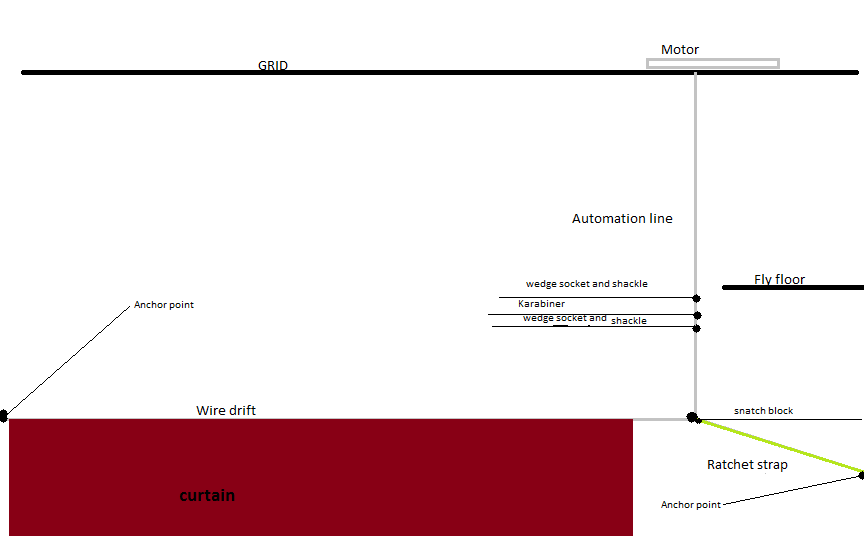Quick release tension wire system: Difference between revisions
SMacluskie (talk | contribs) No edit summary |
SMacluskie (talk | contribs) No edit summary |
||
| Line 1: | Line 1: | ||
[[Category:Projects]] | [[Category:Projects]] | ||
This page documents the solution by [[Kirsty Campbell]] to the production challenge of rigging a quick release tension wire system for | This page documents the solution by [[Kirsty Campbell]] to the production challenge of rigging a quick release tension wire system for the production of [[The Seagull]] in the New Athenaeum Theatre , November 2009. | ||
Initial attempts at constructing this included using a [http://www.highgearsales.com/TIRFOR1.jpg Tirfor] which as expected turned out to be far too loud to de-rig during a short scene change. After much deliberation, it was decided that the most effective method involved using an automation motor to create the desired effect. | Initial attempts at constructing this included using a [http://www.highgearsales.com/TIRFOR1.jpg Tirfor] which as expected turned out to be far too loud to de-rig during a short scene change. After much deliberation, it was decided that the most effective method involved using an automation motor to create the desired effect. | ||
Revision as of 11:01, 14 January 2010
This page documents the solution by Kirsty Campbell to the production challenge of rigging a quick release tension wire system for the production of The Seagull in the New Athenaeum Theatre , November 2009.
Initial attempts at constructing this included using a Tirfor which as expected turned out to be far too loud to de-rig during a short scene change. After much deliberation, it was decided that the most effective method involved using an automation motor to create the desired effect.
Having moved a motor to the desired position, we then lowered the line to meet a 15metre wire drift and attached the two with wedge sockets and shackles. we also added a karabiner between the two lines in order to make the release time quicker and simpler. At a lower point in the line (the same height as the top of the curtain a snatch block was used to divert the direction of the line. A ratchet strap was attached to the snatch block and anchored to a scaff bar at a 45 degree angle which would maintain the horizontal position of the line.
